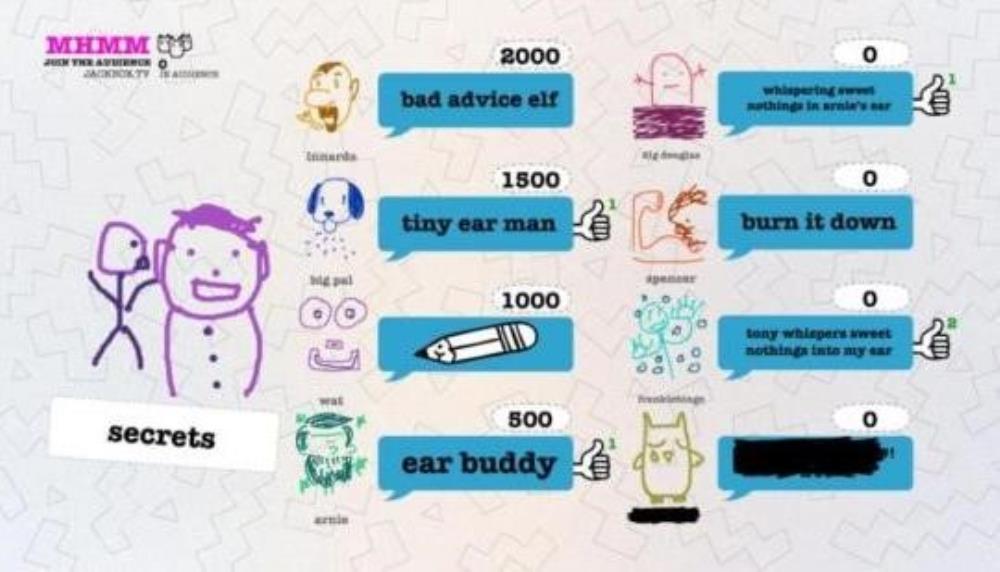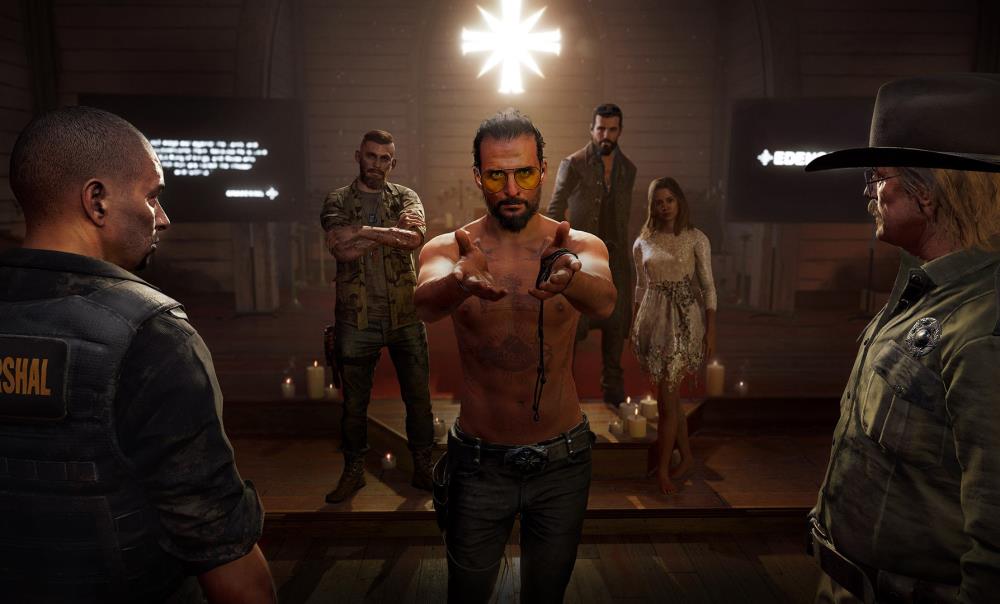Something that’s become typical of my recent reviews is finding a balance between hazarding into spoiler territory while also attempting to be as vague as possible about the praises and complaints with the storytelling. But since the story is not only an important factor but also a key component in driving the game’s mechanics, diving into the ins-and-outs of the machinations of the plot would most certainly rob the player experience even more so than with other games. Since I still can't help but point out some stuff here and you may hardly know anything about it: perhaps avoid this review and play it through fresh eyes, when the pricepoint is suitable for you. Even if I’m very late to the party in reviewing it, I still want to make note of this because that sense of surprise elevates many aspects and it’s through that lens of unawareness with which I first played this game.
The plot synopsis for Gone Home is quite simple. You play as a college co-ed, Kaitlin Greenbriar, coming home after a year-long European trip. "Home" may not be the best way to put it since her family’s moved into this supposedly spooky residence in Arbor Hill, Oregon. Arriving late from her flight back, Kaitlin’s poorly-timed ingress into the house reveals it to be empty and shows some ominous signs of feeling…off in some way. Naturally, it’s up to you to piece together what’s happened to your missing family members.
Even before their first original release here, the co-founders of The Fullbright Company had a previous reputation when it came to storytelling. Before this: they were involved with the Minerva’s Den single player DLC for Bioshock 2. And though I haven’t gotten around to playing that expansion (yet), critics seemed to be rather swayed by it and its incorporation of environmental storytelling—in some cases more so than the full Bioshock 2 campaign. But rather than gripping storytelling within a shooter, Gone Home harnesses that core explorative essence by remaining wholly focused on environmental exploration and some light sleuthing.
Environmental storytelling has seen a much heavier emphasis between AAA and low-tier budgeted titles recently too. Like with The Last of Us and Bioshock, it’s not hard to get swept up in all the various doo-dads scattered across those game worlds begging for you to learn everything feasibly possible about it; yet, what’s seemed to be a diametrically-opposing design ideal on the indie side of gaming recently is in not having the “over-stimulation” of traditional mechanics hampering the self-discovery of thematic material. Releases like Dear Esther and Proteus are some purchasable examples which have taken a more minimalist approach by only requiring simple W/A/S/D movements to finish the game. Gone Home would probably land somewhere betwixt those traditional and nascent philosophies. It finds having expected mechanics in the form of combat would detract from its intent while also distancing from those high-profile walking sims’ designs which ratcheted up the avant-garde posturing to the point of feeling too disabling in my eyes.
While there’s nothing wrong in labeling this as another first-person walking simulator as other examples have been called, a phrase like 'first-person story excavator' would explain the structure in a clearer way. Whereas movies have the “show, don’t tell” rule, games can up that ante by considering if the story was discovered through interactivity rather than being shown through various cut scenes. That’s all Gone Home is in a nutshell: the process of unraveling a mystery via excavation. There are no other people to interrogate, no objective markers, nor any guns to upgrade. The only thing pushing you forward is the narrative hook at the beginning and the deep-seated interest of roaming through this rickety mansion. Curiosity is the only thing pushing you to the end.
This praise can give the impression of me attempting to look artsy and highfalutin—perhaps using that word proves it, but when the game’s in your hands it’s easy to understand the age-old design staples buried within an otherwise untraditional game.
After getting inside and beginning the venture, one of the games that stuck out more prominently with me than the walking simulators was Resident Evil Remake on Gamecube I played back in the day. Since parts of the house are locked or hidden in unexpected ways, there’s a bit of detective work required for a couple lock combinations and story extras that could be missed the first time through if you don’t keep a sharp eye. Thanks to the smart level design and the timing of receiving pleasant voice-over narration from Kaitlin's younger sister, Samantha, when picking up specific items, you’re consistently rewarded for the work that’s been accomplished. The task isn’t simply to walk past an invisible line to receive a text-and-voiceover dump of intentionally-vague story bits or a cacophony of brain-tingling audio and visual cues. In that sensation of doing something based on gaming impulses and that mechanical feedback when examining everything, it feels a world apart from other walking sims and a baseline foundation I believe more non-combative, story-driven games could look towards.
One of the supplemental means in which this sort of gameplay is elevated is by the setting and the density of the house itself. Since the year is 1995, the variety of different collectibles all feels grounded within that specific time period. This isn’t the age of being able to get e-mails or text messages but one of printed letters from an editor or notes being passed during class. It can be considered the game equivalent of dumpster diving at times: collecting strewn receipts and personal notes that can piece together who that person is through impersonal information. It also does—to my own admission—work as an effective means of nostalgia. Being able to skim through a messy living room similar to my own back then or spotting a silly extra like a Lisa Frank-esque folder similar to my sister’s made this house feel as though the entire thing was buried in the mid nineties and unlocked for public viewing in 2013. The setting also enables the means of uncovering this story in methods logical for its time and avoiding the need of keeping the player to scripted segments or the like. It tells so much while taking very few artistic liberties to meet that end.
So much with so little could also be a good explanation of what’s accomplished with the house layout itself. In the same way Bioshock would have different areas of Rapture with a specific story in mind, Gone Home replicates that to a much smaller degree. Instead of one area of Rapture focused on someone like Steinmann, this mansion limits that to a couple of rooms and cuts the over-arching story into bite-sized chapters. The team could’ve very easily gone in a more informational overload direction but instead designed rooms to flow into each other and depict a specific event or theme within them to make it flow like a consumable short story.
As far as the overall story is concerned, I found myself…moderately impressed when it was all said and done. From the excellent opening hook to investigate until the end, the pacing mixed in with the game design make revelations fall into play at the right time. The lead-in with the writing early on was genuinely interesting and relatable when it comes to the flurry of anxieties that come with moving during the high school years. I would say where everything ends up isn’t as remarkable as earlier story elements within the game. From a typical Capulet/Montague inspiration (but with a twist, I suppose) for the central character to discoveries regarding the parents’ ups-and-downs, there’s some oft-expected elements that are genuinely fleshed out and feel earnest in intent but the end result doesn’t quite seem as fascinating as the nuanced angles it could’ve explored. In fact, revelations from both parents’ individual arcs feel so on-the-nose in their delivery.
Even with that sort of acknowledgement, it’s still so easy to get caught up in this sort of story because of the way in which the investigation is presented and executed. It can feel akin to having a brush and the context of the narrative representing that promise of moving away a thin layer of dirt to reveal some kind of fossil. But as it moves on, the reality becomes less about it being an excavation for clues but rather a discovery of some relatively mundane stories. That’s not a suggestion of there being no surprises or horror elements. Those are certainly mixed in. But it’s in the way Gone Home commits what I essentially consider one of the best cases of game design subterfuge in a long time. The main basis of the game throws a wrench at the player asking a simple question: can’t ordinary be just as engaging?
In the end, it’s the ability of trying to pack a young adult fictional story into a game that does just enough in tickling the gameplay itch that makes it so engaging—even with those pros and cons. Even with such a basic concept, the mechanical feedback and basic structure always felt satisfying enough while also cautiously balancing that with the story it wished to tell. It provides the strange empowerment of being either a perfectly clean or horribly messy detective in the process. Just the simple act of rummaging through one room with reckless abandon and then placing everything back in the same way it was left in another room for the fun of it awards that thin level of agency not seen within similar titles. While this and other reasons do a good job in maintaining the focus, that feeling of “just enough” does feel like it could’ve been branched out further. The yearning for another puzzle or two was something that creeped in for me a few times. And since this structure’s also dependent upon remaining grounded to some degree, there did come a point when all the assorted collectibles lying around and the passageways present towards the end did stretch that a bit too far.
In regards to the technical audio/video elements of the game: the accomplishments are quite satisfying. Sound design goes a long way in setting the stage for this haunted house and there’s a few head-banging audio tapes to listen to that are found throughout the house. Even if not the most lauded in pushing polygons or orchestral soundtracks, the looks and sounds seem authentic. I would say one strange issue for me would be some annoying framerate issues on my laptop. Even after messing with the limited settings, drops would seem to occur in some locations where I could cause Gone Home’s equivalent of a commotion: turning a ceiling fan on and off, throwing stuff around, etc. Whether it’s about optimization for my specific set of specs or whatnot (don’t know much about stuff at the moment), engagement was slightly harmed because of it.
The one aspect most hurtful to the game’s reputation by some would be the upfront value. It’s understandable for anyone to be hesitant of purchasing a twenty-dollar game that can be completed in two hours. The consumerist outlook I try to have can see a ten dollar per hour result is certainly not the best of deals. But in keeping a shorter title, it’s able to feel contained and scattered with enough detail throughout to warrant later playthroughs to make sense of hints not previously understood until after the fact. Even with these pleads considered, I know a good number of people still won’t like that price point altogether. And though I can certainly understand the unease (full disclosure: bought it the first week it released with the -10% off deal), it’s not possible for me to hang that around the game’s neck because I was totally engrossed for that short time-span, even being worried about jump scares at one point that I quit and came back at a later time. Heck, the atmosphere between a first and second playthrough vary so wildly that it’s fun to simply go back to see everything in a new light.
What makes Gone Home an attractive product is in how it contrasts with other games by just being something not often dawned upon by the rest of the industry: use of the unexciting, everyday lifestyle. It’s able to present a cluttered house as an opportunity for a unique sort of exploration; not one with dogs that can jump through glass windows yet one that can still subtly reinforce a similar kind of trepidation. It’s willing to pare down on traditional gameplay while still considering it as a means to do more than previously-released walking simulators. And despite that making some of the lesser individual elements tougher to ignore, it’s still able to produce fascinating discoveries in a way that left a long-lasting impression.
coolbeans’ *Certified FresH* Badge

Starting today, Drawful 2, Gone Home, Hob, and Totally Reliable Delivery Service are free at Epic Games Store. The free game offers run until April 9 at 10 AM. Once you claim them, they’re yours to keep.

Video games do a lot of good things, but they can often get romance very wrong. This is why it can be so refreshing when they actually get it right! Below is a list of the greatest romances of all time, the ones that continue to be remembered for giving an honest portrayal of what it can be like when two people fall for one another.
I never understood the romance between Tidus and Yuna. And yes.....it could be the best FF of all time, the game is really epic!
Fei and Elly are right up there. Their love transcended multiple life times, and became very convincing as a couple over a long story. Xenogears even has some naked sprite action going on between each other ;)
how about mario and peach. He deserves a award for saving her dum ass from been kidnapped from the 1000th time lol
Replace Tidus and Yuna with Fei and Elly (Xenogears). That was probably the the best romance story featured in a Square title.

We selected 15 games including Far Cry 4 and 5, Nier: Automata, Devil May Cry 5 and other titles that take less than 15 minutes to finish and explained how to do it
why would one want to purchase a game that can be completed in 15 minutes? Speed runners always annoy me...they take all the fun away from play video games...they're..."Sp ecial"
Hope everyone enjoyed the review. Please feel free to leave any comments and/or questions below.
Just in case anyone's unfamiliar with the Consumerist Warning down-mark up above: it's not meant to contradict what I mentioned in the written portion. When considering instances like this and future titles I may review, similar questions regarding dollar-per-hour value are bound to creep up. I think this just serves as a sort of "flashing indicator" to anyone stumbling into this unprepared to understand the cost and avg. run time.
Nicely written review though I feel any reviews for this "game" are more appropriate for www.gooodreads.com than for a video game site.